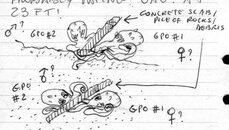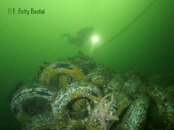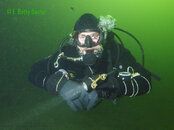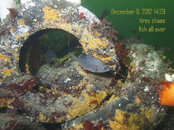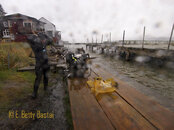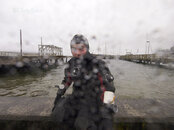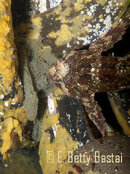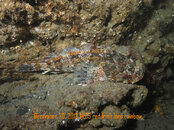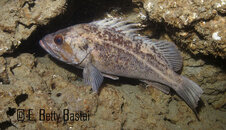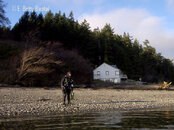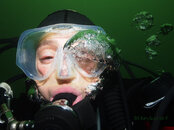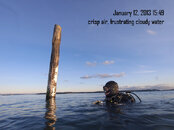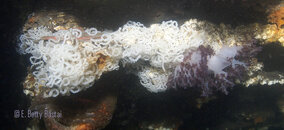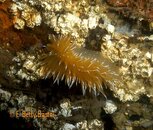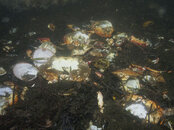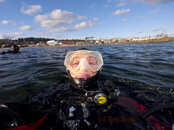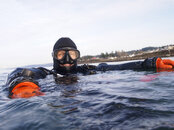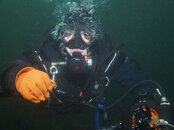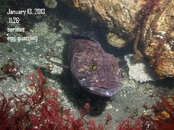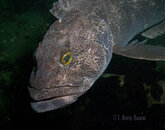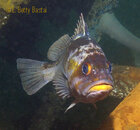Soakedlontra
Contributor
Giant Pacific Octopus Saturday Night Show on December 1st
On December 1st I had the amazing chance to see two large giant Pacific octopuses out in the open in the same spot at Cove 2, West Seattle. My buddy and I did two night dives at this popular dive site. Strangely enough, during the first dive just one instructor and his students were in the water and during the second we were alone. Usually, Cove 2 is packed with divers at weekends. We did not see the second octopus until we were half way through with our second dive. I guess we must have been under the effects of a common underwater condition called "scuba blindness". The two animals were facing each other separated by a physical barrier. It looked like a pile of rocks with a concrete slabs jammed in the middle of it. When we spotted the first octopus we thought that it was trying to pull out from a hole a crab to eat. Bu when we saw the second octopus we figured that the first animal was a female and the second a male and they were having a romantic encounter.
Since that day I have been trying to confirm that what we saw was indeed two octopuses mating. A couple of weeks later we dived at the same site and searched for the same spot to see if under that pile of rocks there was a den with a female inside. Unfortunately we did not think about marking the area so it was like looking for a needle in a haystack. Disappointingly we did not find it and did not see any octopuses either. After writing to a couple of GPO experts, I was not able to solve this mystery. However I have been thinking about it and reached the conclusion that it is more likely that those two octopuses were both males and that they were interested in a female that was inside a den that we were not able to see because the males large bodies were obtruding the view.
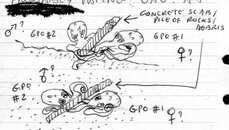
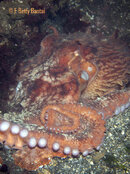
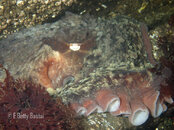
On December 1st I had the amazing chance to see two large giant Pacific octopuses out in the open in the same spot at Cove 2, West Seattle. My buddy and I did two night dives at this popular dive site. Strangely enough, during the first dive just one instructor and his students were in the water and during the second we were alone. Usually, Cove 2 is packed with divers at weekends. We did not see the second octopus until we were half way through with our second dive. I guess we must have been under the effects of a common underwater condition called "scuba blindness". The two animals were facing each other separated by a physical barrier. It looked like a pile of rocks with a concrete slabs jammed in the middle of it. When we spotted the first octopus we thought that it was trying to pull out from a hole a crab to eat. Bu when we saw the second octopus we figured that the first animal was a female and the second a male and they were having a romantic encounter.
Since that day I have been trying to confirm that what we saw was indeed two octopuses mating. A couple of weeks later we dived at the same site and searched for the same spot to see if under that pile of rocks there was a den with a female inside. Unfortunately we did not think about marking the area so it was like looking for a needle in a haystack. Disappointingly we did not find it and did not see any octopuses either. After writing to a couple of GPO experts, I was not able to solve this mystery. However I have been thinking about it and reached the conclusion that it is more likely that those two octopuses were both males and that they were interested in a female that was inside a den that we were not able to see because the males large bodies were obtruding the view.



Attachments
Last edited:



